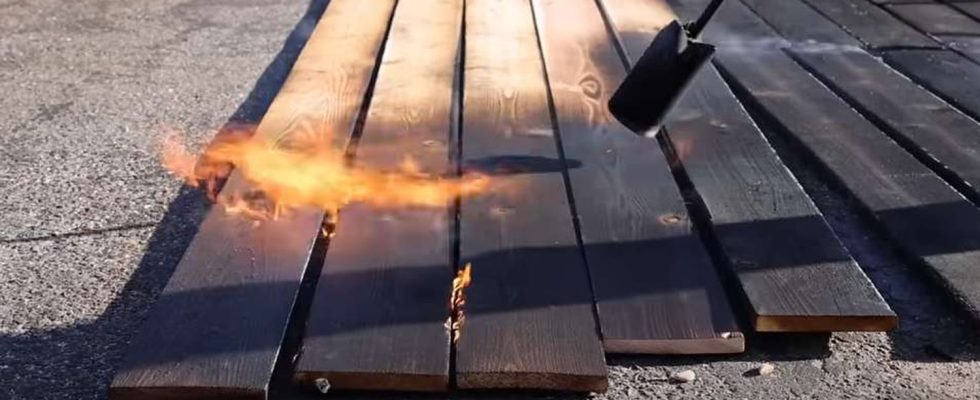Want to protect your flower bed? Try this method!
Wooden flower beds are very pretty, but the wood that makes them up never lasts long. In the spring, everything is fine, but after an autumn and a winter of bad weather, the wood takes on a rather dull color and quickly begins to rot. But there is a method to protect your wooden flower bed and make it durable for many years.
This is an ancient Japanese technique of carbonizing the surface of wood known as Shou Sugi Ban. In the Shou Sugi Ban, the wood is charred, creating a surface that protects it from moisture, mold, rot, and even insects. Shou Sugi Ban literally means “burnt cedar wood”. This 18th century fire treatment of wood gives it remarkable resistance to the elements, while giving it a smoky black look that’s both minimalistic and sophisticated. We give you a detailed user manual below but here is the carbonization step of the boards:
And here is the final result of a flower bed assembled by a gardener from burnt boards. If you want to see the whole production on video, you can click here to go to Youtube. Otherwise continue reading this article after the photo, we explain how to do it yourself, it’s extremely simple.
How to make Shou Sugi Ban yourself?
Step 1: Wood selection: The first step in the Shou Sugi Ban method is choosing the right wood. Traditionally, Japanese cedar, or “sugi”, is used, but other wood species may also be suitable, such as pine, oak or larch.
Step 2: Preparing the wood: The wood must be clean and dry. The boards should be of the same thickness and it is recommended to have boards 2 to 3 cm thick for better durability.
Step 3: Carbonization: The wood should be charred using a blowtorch. It is important to do this evenly over the entire surface, until it is black and the wood grain texture stands out clearly. Be extremely careful with this step, as you are working with fire.
Step 4: Brushing: Once the wood has cooled, it is brushed to remove the charcoal layer and reveal the grain of the wood. This can be done with a stiff wire brush.
Step 5: Rinse: The wood is then rinsed with water to remove any remaining charcoal dust.
Step 6: Oiling: Finally, the wood is oiled. Natural oil, such as linseed oil, is generally used. This step protects the wood and improves its longevity.


